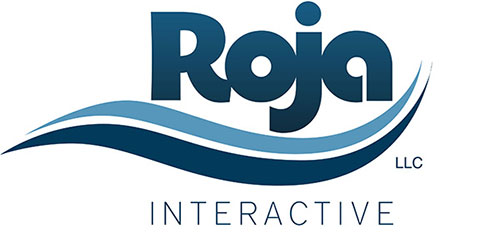10 Tips For Online Fraud Prevention
Reports of widespread online fraud have reached gigantic proportions in recent years. Because of this, online merchants need to implement more security measures for online fraud prevention.
Small groups have amassed hundreds of thousands and even millions from spam, phishing, hacking and other fraudulent marketing techniques. Then, there’s the threat from the new breed of scam artists who take advantage of credit card and financial information over the internet along with identity thieves who are making it big at the expense of legitimate online businesses.
Fraudulent practices victimizing credit card holders have become alarming. Online merchants of goods and services suffer huge losses via chargebacks from the financial institutions who serve the victimized credit card holders. These online businesses have to take the risk of immense losses. Yes, such cost can be forwarded to the customer, but the prevalence of these schemes destroys the entire online industry especially for the ecommerce development of small business owners.
Below are 10 tips to help you prevent online fraud
1. Identify whether the country is a high risk country.
One survey showed the top 12 international sources for online fraud are Ukraine, Indonesia, Yugoslavia, Lithuania, Romania, Egypt, Turkey, Bulgaria, Russia, Israel, Pakistan and Malaysia. That same survey also showed that the 12 countries with the lowest fraud rates are New Zealand, Austria, Taiwan, Spain, Norway Japan, South Africa, Switzerland, Hong Kong, the UK, Australia and France. If the card or the shipping address is on the list, it’s an indication that you need to pay more attention to this order. Though it doesn’t always mean that if the origin of order comes from these high risk countries it automatically indicates fraud and that orders that originate from countries with lowest fraud rate are safe, but you can use this information as a guide or precaution.
2. Match the credit card issuing bank’s country with the billing address country.
Making sure that the issuing country matches with the billing address country adds more authenticity as minor banks do not always have strict identification procedures.
3. Geolocation by IP address
One significant ecommerce development is the ability to know the online buyers’ geographic information, which substantially helps prevent fraud. Geolocation technology allows the identification of geographic location by IP address of the computer from which the order is placed in real-time online transactions. This is a great tool to identify locations where the probability of fraud is the highest such as the identification of the user’s exact location and the calculation of the distance between the billing address of an online buyer and actual location of the customer entering the order.
The use if this service allows you to utilize more authentication measures or identification for those transactions which show a great difference of distance.
4. Check further for anonymous e-mail address.
Free and/or anonymous e-mail providers are almost untraceable and pose a much higher probability of fraud as opposed to ‘real’ email addresses. Notice that almost all businesses that make online purchases use their own domains as contact email address. The larger the company making a purchase, the more likely they are authentic. However, if your customer provides a free email address, it is helpful to locate them geographically when they place their order, so as to know which orders need further checking for authenticity.
5. Make sure that phone number is valid and located within the correct ZIP code.
Orders with invalid zip codes or a mismatch between the zip code and area code are also a hole for fraud. This case is growing at a fast rate. Verifying the validity of zip code and the area code is absolutely helpful when included as a part of the authentication process. You may want to delay the shipment and wait for the clearing of payment for customers using V.O.I.P phones.
6. Compare the IP address country with the billing address country.
When a computer is logged on to the internet, an IP address, which serves as a unique network identifier is issued by an Internet Service Provider. Make sure the IP address country matches with the billing address country. When the customer’s billing and shipping addresses are in the US and the one placing the order is logged in from an IP outside the US will definitely need further checking and the application of other precautions. The cost of calling the customer’s US phone number to confirm the identity of the credit card holder is nothing compared to the amount of the fraudulent purchase.
7. Investigate whether an anonymous proxy server was used to place the order.
Proxy servers allow businesses to protect internal networks. Fraudsters take advantage of this to remain undetected. Proxy servers allow a computer to remain anonymous. To hide their real identity, internet users hide their real IP address through anonymous proxy server’s IP address.
8. Verify the validity of the credit card by calling the issuing bank.
To rule out possibility of stolen credit cards being used and if you have any doubt about an order and need to confirm the details about the credit card holder, you can call the issuing bank to ask and confirm the general account details. The first 6 digits of the credit card number are known as the Bank Identification Number (BIN) in which the issuing bank’s phone number is based.
9. Identify whether the mailing address is a mailbox or ship-forward service.
Unscrupulous customers always want to remain untraceable while collecting their ordered merchandise. A public P.O.Box, a private mailbox, or a drop shipment forwarding address as a temporary point of receiving are among the ways to do it. The real identity of the receiver is virtually undetectable, so avoid sending your merchandise using these methods.
10. If still in doubt, ask for more identification.
Consumers value their privacy and fast processing of online orders. But if customer identity details such as the customers’ name, credit card number and expiry date seem insufficient, it’s alright to call them for verification through phone or ask for a photo ID to be faxed if you still have doubts.
Online fraud is not easy to eliminate, but there are ways to control it. As an online merchant, it is imperative to be aware of the different tricks used by fraudsters. Understanding your customer and adopting online security measures based on the level of risk in each purchase are among the most essential precautionary measures for online fraud prevention.
We Keep Security Top of Mind
At Roja, we offer security-focused advice and development to our customers to ensure that their website, web application, or ecommerce store is as secure as their project budget allows. Feel free to drop us a line to discuss ecommerce development and how we can help you to get your products or services online quickly and securely.





Leave a Reply